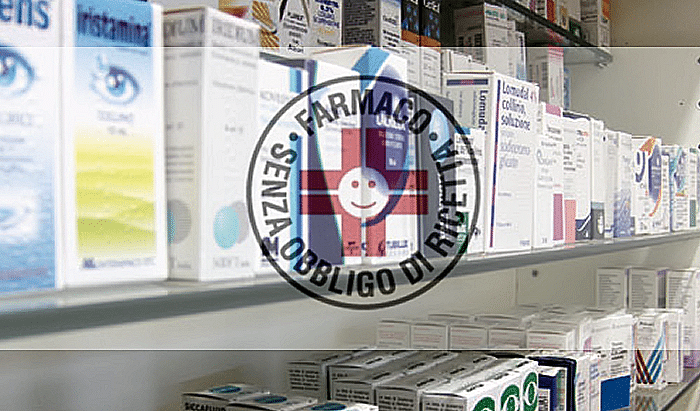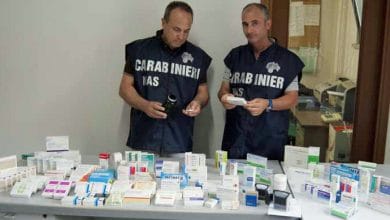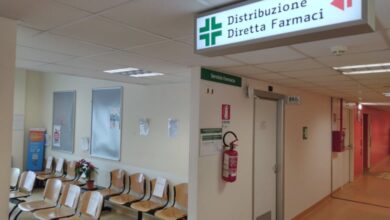

Now in its 52nd edition, the Censis Report continues the analysis and interpretation of the most significant socio-economic phenomena in the country, identifying the real transformation processes of Italian society. The "General Considerations" which introduce the Report dwell on these issues. The second part, "Italian society in 2018", deals with the most interesting processes that emerged during the year. In the third and fourth part, analyzes by sector are presented: training, work, welfare and health, the territory and networks, individuals and economic processes, media and communication, security and citizenship.
«The welfare system» of the 52nd Censis Report on the social situation of the country/2018
Rome, 7 December 2018 – Different and alone: Italians in the face of healthcare. It is a widespread belief that the relationship of citizens with the Health Service is highly differentiated due to the incidence of a series of variables: from the territoriality of the offer to the socio-economic condition, to the age of the people. Difficult access to health care generates additional costs, with a consequent rush to opportunistic behavior and a growing feeling of inequality and injustice, with the belief that everyone must think for themselves. More than half of Italians (54.7%) think that in Italy people do not have the same opportunities for diagnosis and treatment. 58,3% of the residents in the North-East, 53,9% in the South, 54,1% in the Center and 53,3% in the North-West think so. There are even more than 39 percentage points of difference in the percentages of satisfied people between the South and the islands and the North-East, which records the highest level of satisfaction among the territorial macro-areas. Emblematic are the data on the degree of satisfaction with the Health Service of one's Region: the national average value of 62.3% fluctuates between 77% in the North-West, 79.4% in the North-East, 61.8% in the Center and 40.6% in the South and in the islands.
 Self-regulation of health yes, deregulated "do it yourself" no. In the protection of health and in the relationship with health care, the principle of self-regulation of health is increasingly widespread, in the wake of expert knowledge. There are 49.4 million people who suffer from minor ailments (back pain, headache, etc.) that affect the functionality and quality of their daily life. 73.4% of Italians said they were convinced that it is possible to treat themselves alone in such cases (with an increase of 9.3% compared to 2007). 56,5% believes that it is possible to treat oneself autonomously because everyone knows their own small ailments and the appropriate responses, 16,9% because it is the fastest way. The relationship with expert knowledge in health self-regulation is decisive: despite the growth of the web (28%), the main information channels of Italians remain the general practitioner (53.5%), the pharmacist (32.2%) and the specialist doctor (17.7%). One of the fields in which health self-regulation is most expressed is that of the use of self-medication drugs: in fact, it is almost all Italians who are treated using non-prescription drugs, freely purchased in pharmacies. The consequences for the quality of life of people and for the functionality of workers are significant. There are 17.6 million Italians who, the last time they had a minor ailment, took an over-the-counter drug: a choice that proved to be decisive because they were able to continue carrying out the activities they would otherwise have had to leave. There are 15.4 million workers who have continued to work thanks to the effect of over-the-counter drugs in the presence of minor ailments.
Self-regulation of health yes, deregulated "do it yourself" no. In the protection of health and in the relationship with health care, the principle of self-regulation of health is increasingly widespread, in the wake of expert knowledge. There are 49.4 million people who suffer from minor ailments (back pain, headache, etc.) that affect the functionality and quality of their daily life. 73.4% of Italians said they were convinced that it is possible to treat themselves alone in such cases (with an increase of 9.3% compared to 2007). 56,5% believes that it is possible to treat oneself autonomously because everyone knows their own small ailments and the appropriate responses, 16,9% because it is the fastest way. The relationship with expert knowledge in health self-regulation is decisive: despite the growth of the web (28%), the main information channels of Italians remain the general practitioner (53.5%), the pharmacist (32.2%) and the specialist doctor (17.7%). One of the fields in which health self-regulation is most expressed is that of the use of self-medication drugs: in fact, it is almost all Italians who are treated using non-prescription drugs, freely purchased in pharmacies. The consequences for the quality of life of people and for the functionality of workers are significant. There are 17.6 million Italians who, the last time they had a minor ailment, took an over-the-counter drug: a choice that proved to be decisive because they were able to continue carrying out the activities they would otherwise have had to leave. There are 15.4 million workers who have continued to work thanks to the effect of over-the-counter drugs in the presence of minor ailments.
The value of coaching and guidance for accessing welfare. The demand for coaching in the relationship with welfare today finds solutions in the "do it yourself" of family relationship networks or on the market. It is not enough to increase the number and type of welfare services and benefits, if the conditions are not created so that the people who need and have the right to actually use them. 52.7% of Italians do not know who to turn to in the event of a welfare problem. 44,9% turned to family and friends who had already faced the problem, 27,1% resorted to the paid help of specialized companies, 24,8% gave up solving a problem because he couldn't figure out who to contact. Compared to the 51,5% of Italians convinced they can face the problems alone, the 48,5% instead is not able to face the difficulties autonomously.
Territories with little work and those that do not create it: the risks for local welfare systems. The best response to hardship remains the creation of new real, sustainable work with appropriate wages. In some territorial areas the discomfort is more marked: among the provinces whose employment rate shows a significant gap compared to the national employment rate, there are Reggio Calabria (-20.4%), Foggia (-19.8%) and Agrigento (-18.2%). On the other hand, the provinces of Barletta-Andria-Trani (+4.7%), Syracuse (+2.5%), Enna (+4%), Caltanissetta (+3.4%), Palermo (+2.6%) and Naples (+1.0%) show positive performances in terms of employment growth in the period 2013-2017. In terms of youth employment there are dynamics of restriction in the period 2013-2017 which affect the provinces of Bolzano (-2.2%), Sondrio (-2.8%), Cuneo (-2.1%), Brescia (-2.7%) and Verbano-Cusio-Ossola (-1.1%). Faced with such a specific geography of the creation or otherwise of employment, even welfare responses can only be modulated on local peculiarities.
The importance of pensions for the daily well-being of families. Pensions today perform more important social functions than that of pure protection for old age for which they were historically born. It would be a serious limitation not to grasp this dimension which is closely connected with the daily life of families. There are over 16 million people who receive pensions in Italy. The number has decreased in the last year, as more people have stopped receiving pensions than new retirees. Pension incomes are also decreasing, because those of new retirees are lower than those of retired ones: 15,000 euros against 16,700 euros per year. Approximately 50% of Italian families are trained or have a pensioner within them, for a total of 12 million households. Retirees who live alone are 27.8%, 36.2% live as a couple without children, 18% as a couple with children, 8% are a single parent. For 63.3% of families, pension transfers are equal to more than three quarters of their income, for 26.4% the pension constitutes the total family income. The contribution of pensions in reducing the risk of poverty for the most vulnerable families is fundamental: the pension reduces the risk of poverty by 12.4% for single-parent families, 9.6% for couples with children, 6.8% for single people, 2.8% for couples without children.
Related news: The «Security and citizenship» chapter of the 52nd Censis Report on the social situation of the country/2018
FNOMCeO. Rings, a reflection on health inequalities
Istat: 28.9% of residents in Italy are at risk of poverty and social exclusion
Healthcare: "over 60s" and chronically ill people spend 23 billion on private care





